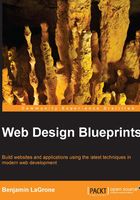
Introduction to responsive web design
Let's be honest, you already know what responsive web design means. But for the sake of the age-old tradition of pedagogy, I'll explain. Responsive web design is designing a website to optimize for multiple different viewports. What this means is that in this part of the book, I'll be discussing various techniques for creating a webpage that will look good on mobile devices, tablets, desktops, and laptops, and so on.
I'm not a fortune-teller, but I suspect that mobile devices are not disappearing any time soon. In fact, in my work, I've seen the traffic move from desktop to mobile. In many areas, we see that mobile is the primary tool for people's search for information. If it's not the primary one, it's at least a growing audience. Or else, they are the audience that leaves a site that doesn't have a mobile Web presence. Therefore, the demand for web developers who understand responsive design is paramount to the industry. This skill is a must-have if you want to stay current in the developer workforce.
In this chapter, I will discuss responsive elements, layouts, media, typography, and navigation. You can jump ahead to a section you are particularly interested in or read the whole thing from beginning to end. If you follow along through the entire chapter, you should have a good starter template for a responsive website. We'll learn the following:
- Responsive web design basics
- The user agent
- The media query
- Responsive images with CSS
- Responsive images with
srcset - Responsive video
- Responsive typography
- Responsive layouts
- Responsive menus with CSS and JavaScript